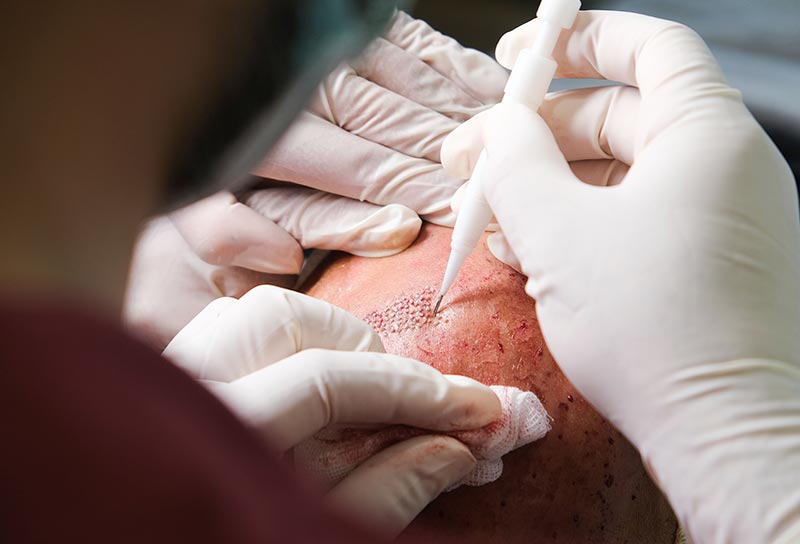How Is the Hairline Determined?
The hairline plays a crucial role in hair transplantation or aesthetic hair design processes. It directly influences the overall aesthetic appearance of the face and should be planned according to the individual’s facial features, age, and gender. Determining the hairline is not just a technical process but also a design process requiring an artistic approach. A customized hairline is essential to achieving a natural and aesthetically pleasing look.
When determining a hairline, the goal is to create a natural appearance that harmonizes with the facial features. Hairline design may differ significantly between men and women, as it is tailored to their individual characteristics. The hairline is not merely an aesthetic detail; it is also a key factor in boosting self-confidence. So, what factors are considered during the hairline design process? Below, we delve into the details of this important question.


İÇİNDEKİLER
What Factors Are Considered When Determining the Hairline?
Hairline determination is a personalized design process that requires careful evaluation of multiple factors. During hair transplantation or aesthetic design, the hairline is planned by considering elements such as the individual’s facial features, skin type, age, gender, and type of hair loss. Properly determining the hairline ensures both a natural appearance and long-lasting aesthetic results.

How Is a Natural Hairline Created?
The process of creating a natural hairline begins with planning that aligns with the individual’s facial structure and aesthetic expectations. The hairline is typically designed close to the natural boundaries of the forehead. During transplantation, the density and arrangement of transplanted hair follicles directly impact the natural look of the hairline. Fine hair strands or a more spaced arrangement play a crucial role in achieving a natural appearance.
Techniques such as DHI (Direct Hair Implantation) and FUE (Follicular Unit Extraction) are often used to create a natural-looking hairline. These methods ensure that hair follicles are placed at the correct angle and direction. Additionally, designing the hairline with a slight wave instead of a straight line helps achieve a more natural look. Crafting a natural hairline requires not only technical expertise but also an aesthetic perspective.
Aesthetic and Technical Elements of the Hairline
When designing a hairline, careful consideration must be given to the angle, density, and direction of the hair follicles. For a natural appearance, hair follicles are typically placed thinner and more sparsely at the frontal hairline and denser toward the crown. This approach ensures the hairline blends seamlessly with the face. Additionally, aligning the placement of hair follicles with their natural growth direction enhances the hairline’s aesthetic appeal.
The individual’s face shape is another crucial factor. For example:
- Round faces: A more rounded hairline may be preferred.
- Square or angular faces: Straighter or sharper hairlines might be emphasized.
Considering these details in hairline design ensures a personalized and aesthetic outcome.
Is Hairline Design Different for Men and Women?
Hairline design for women and men differs due to aesthetic expectations and biological differences. Women’s hairlines are generally softer and rounder, while men’s hairlines are more defined with sharper lines. This difference is not only an aesthetic preference but also relates to the biological structure of each gender. Women’s hairline design aims to create a more natural and fuller appearance, while in men, it is shaped according to the type of hair loss.
Hairline Design for Women
Hairline design for women is typically done with rounder lines that soften the facial features and provide a more feminine look. The design is planned according to the natural hair loss pattern and hair density. During women’s hairline design, denser and finer hair follicles are used at the front of the hair to achieve a natural appearance. Additionally, as women’s hair loss areas generally differ from men’s, these details are taken into account when designing the hairline.
One of the most important factors in determining the hairline for women is the preservation of existing hair. Women typically experience more localized and less extensive hair loss compared to men. Therefore, it is crucial to perform the transplantation without damaging the natural structure of the existing hair. The DHI method is commonly preferred for achieving a natural look in women’s hairline design.
Consult Now!
Fill out the form to get detailed information about the hair
transplant process and personalized solutions tailored for you!
Hairline Design for Men
Hairline design for men is typically done with more defined lines on the forehead and temple areas. The type of hair loss in men may vary depending on genetic factors, and this directly influences the hairline design. When determining the hairline for men, the Norwood scale is often used to assess the level of hair loss. This evaluation plays an important role in deciding how far back the hairline should be placed.
Hairline design for men usually involves sharper and straighter lines, while the angle of hair follicle placement is carefully considered to achieve a natural appearance. Since hair loss in men typically begins at the forehead, the design aims to increase hair density in the frontal area. Hairline design for men not only provides an aesthetic look but is also planned in harmony with the individual’s facial features.
